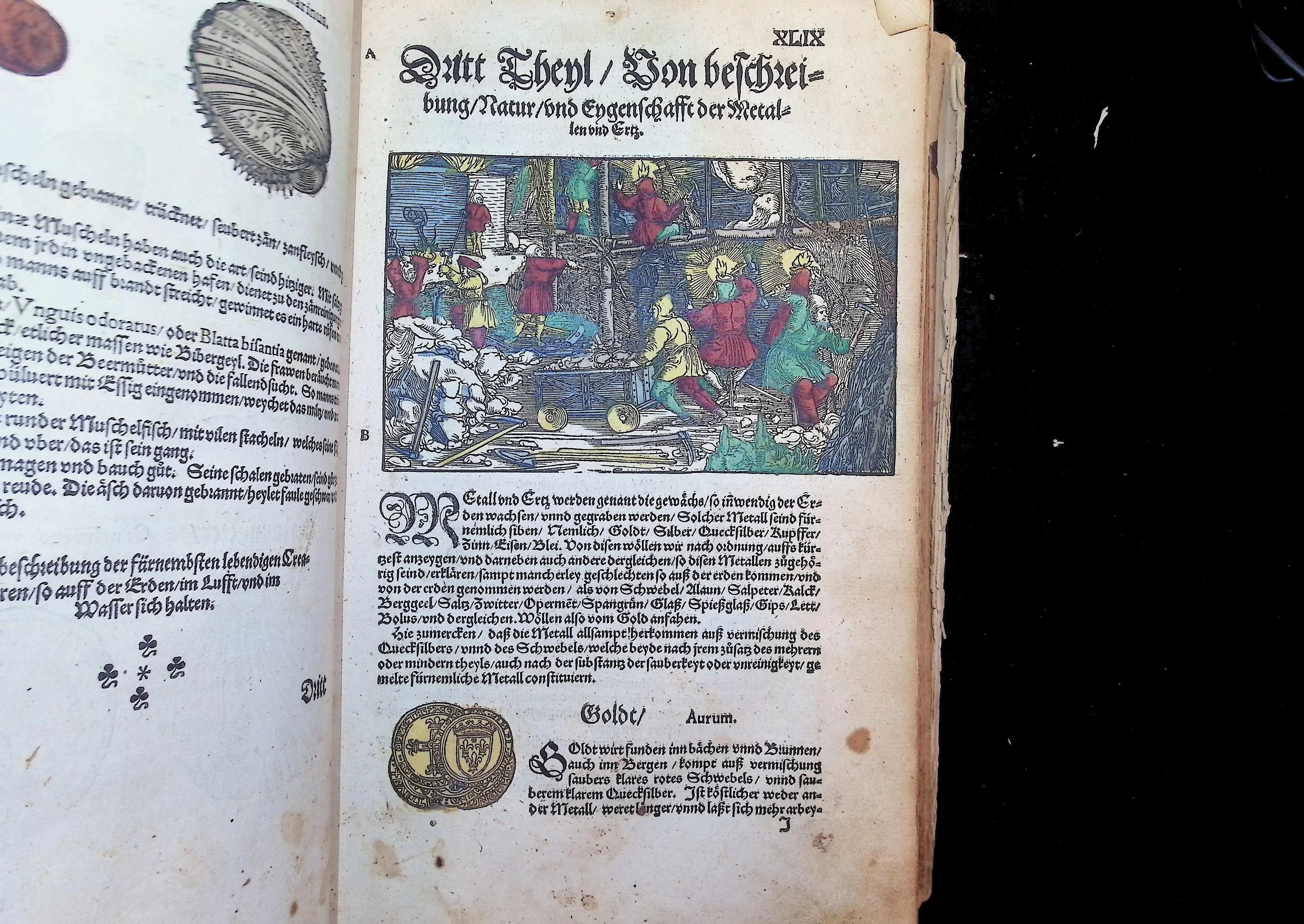
Adam Lonicer, Kreuterbuch (1564)
Although not primarily a mining text, Lonicer’s Kreuterbuch (herb book) contains passages on earth-derived minerals like ores and gems.
Held in the Kinney Center’s rare book collection.
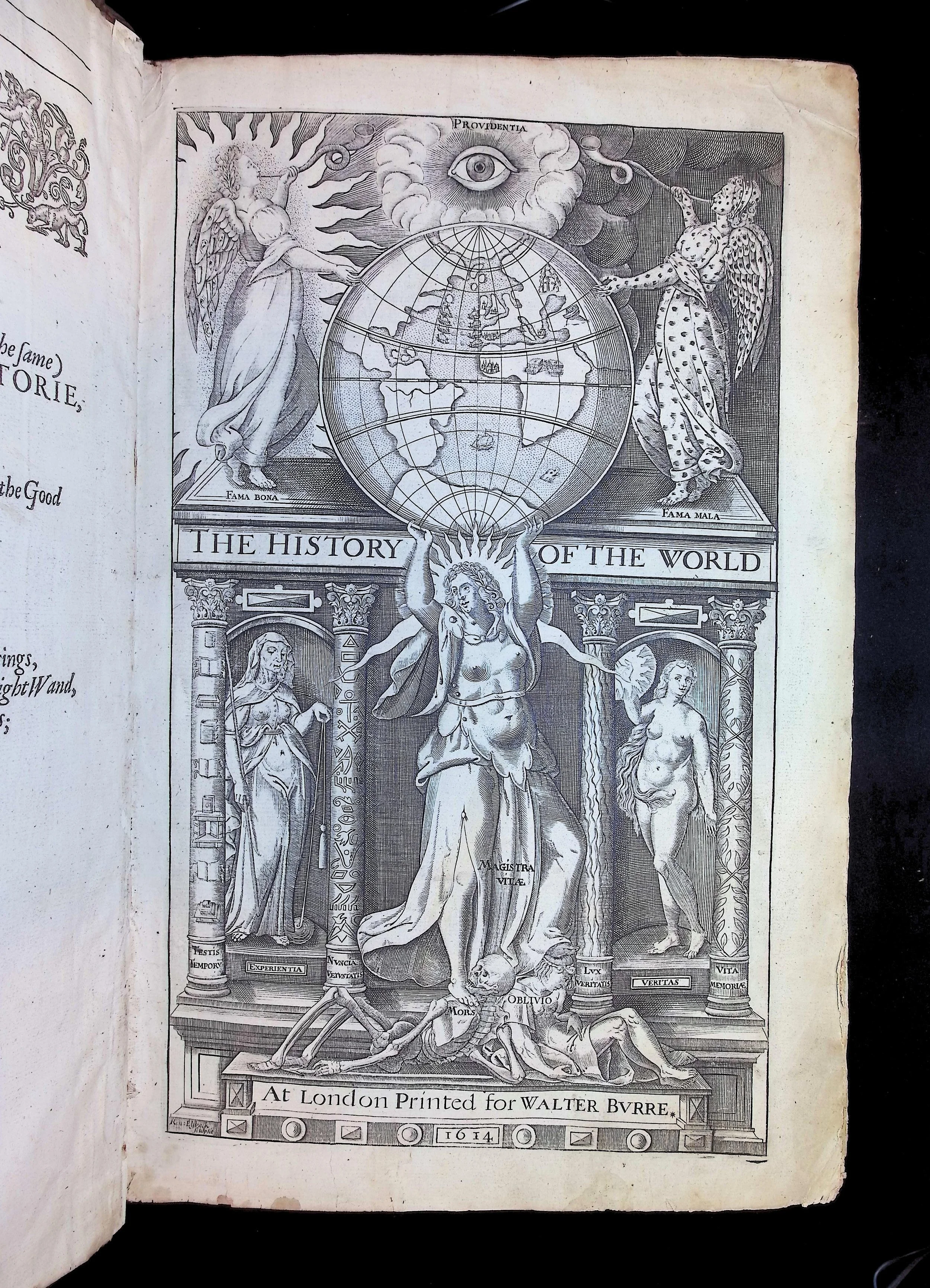
Walter Raleigh, The History of the World (1674)
Raleigh draws analogies between human anatomy and earthly elements, including flesh as earth and dust, bones as rock and stone.
Held in the Kinney Center’s rare book collection.
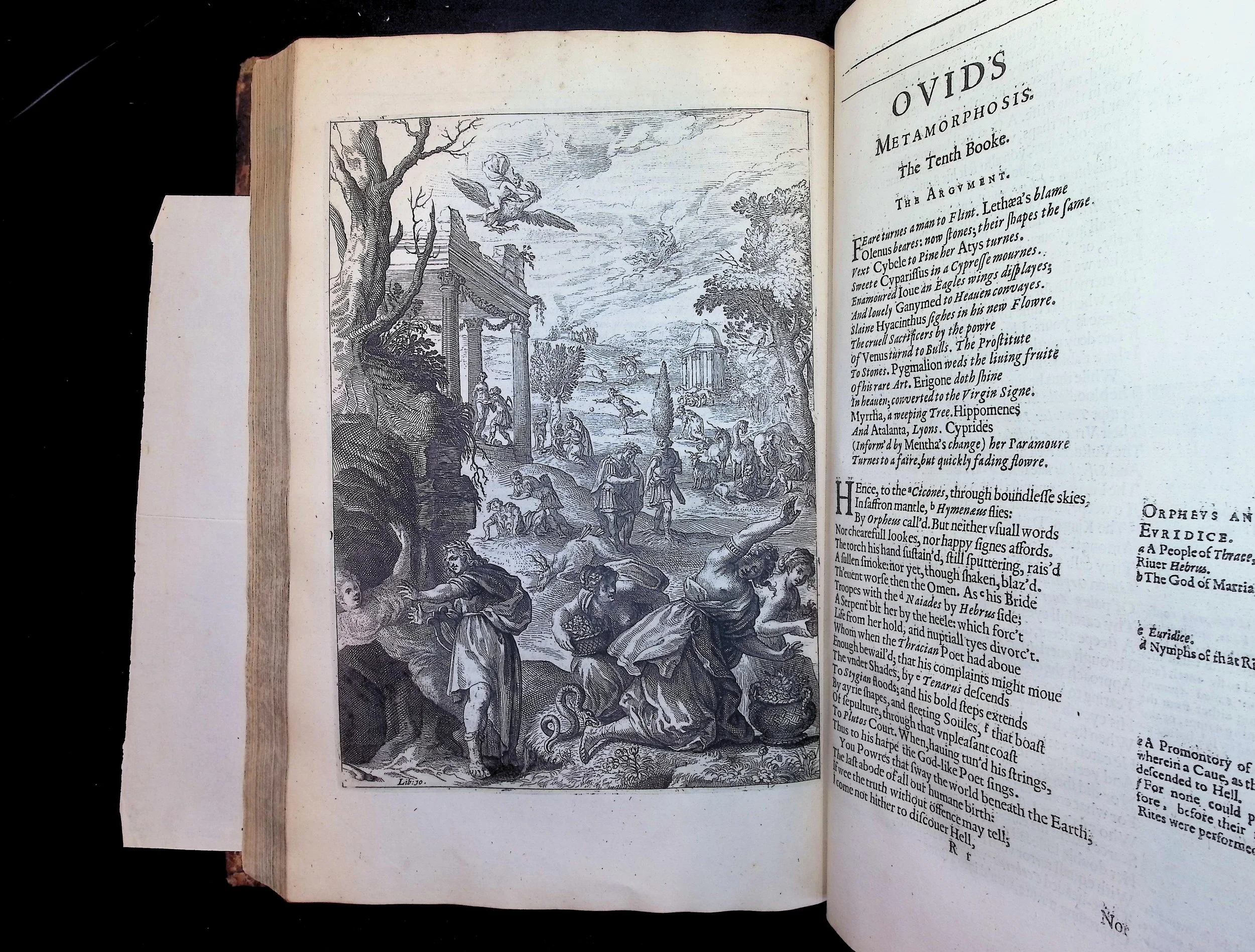
Ovid, Metamorphoses (1586)
In Book Ten of the Metamorphoses, Orpheus descends into the Underworld to retrieve his wife Eurydice after she dies from a snakebite on their wedding day.
Held in the Kinney Center’s rare book collection.
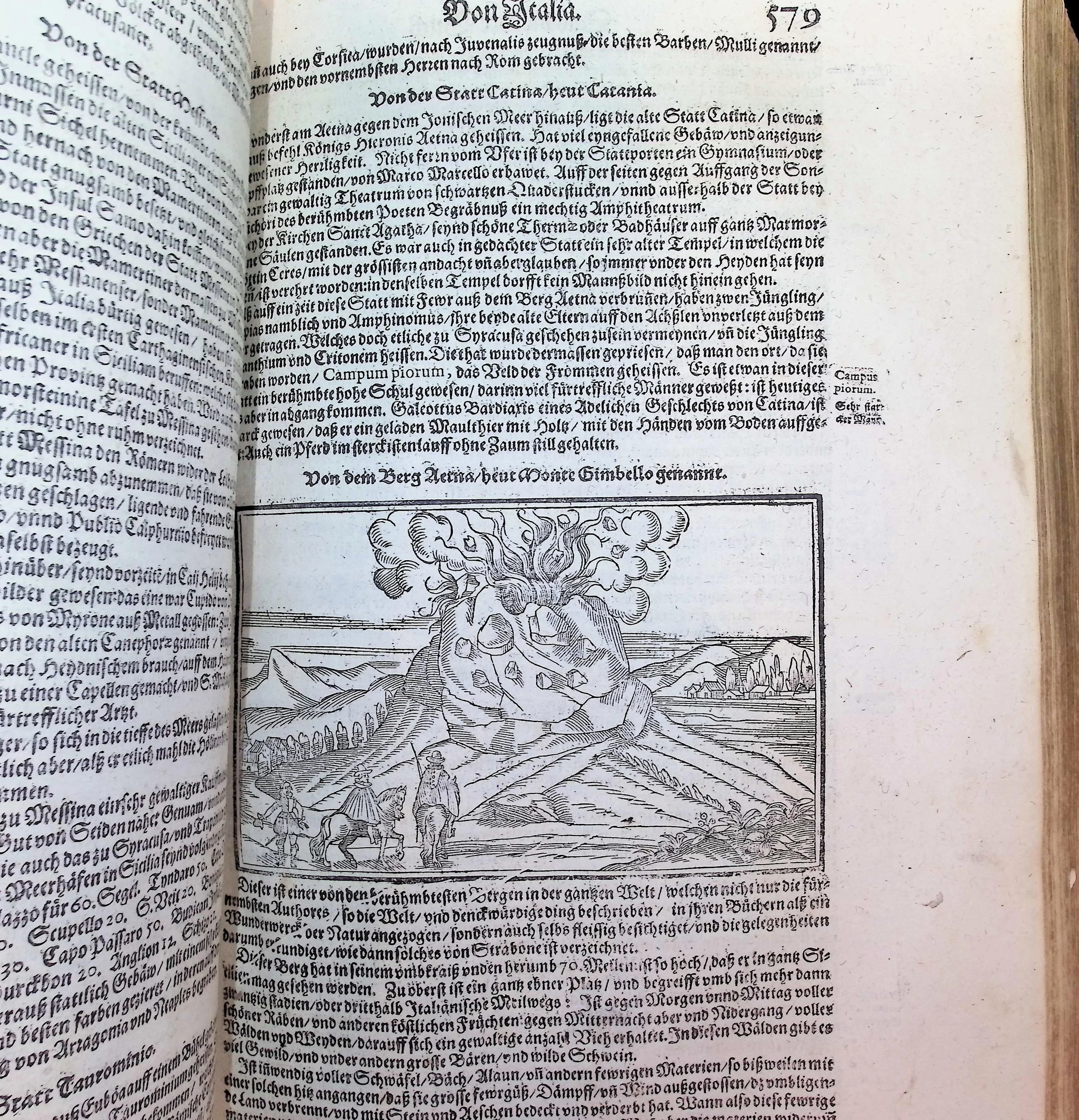
Sebastian Munster, Cosmographia (1628)
This example of a cosmography (description of the world) features a woodcut of the Stromboli volcano in Italy.
Held in the Kinney Center’s rare book collection.

Dante Alighieri, Inferno (1564)
Book Three of Dante’s Inferno features the gates to hell with the famous inscription, “Abandon hope all ye who enter”. In this image, we see the gates in the top right corner near the earth’s surface opening onto a spiraled descent to the river Styx.
Held in the Kinney Center’s rare book collection.
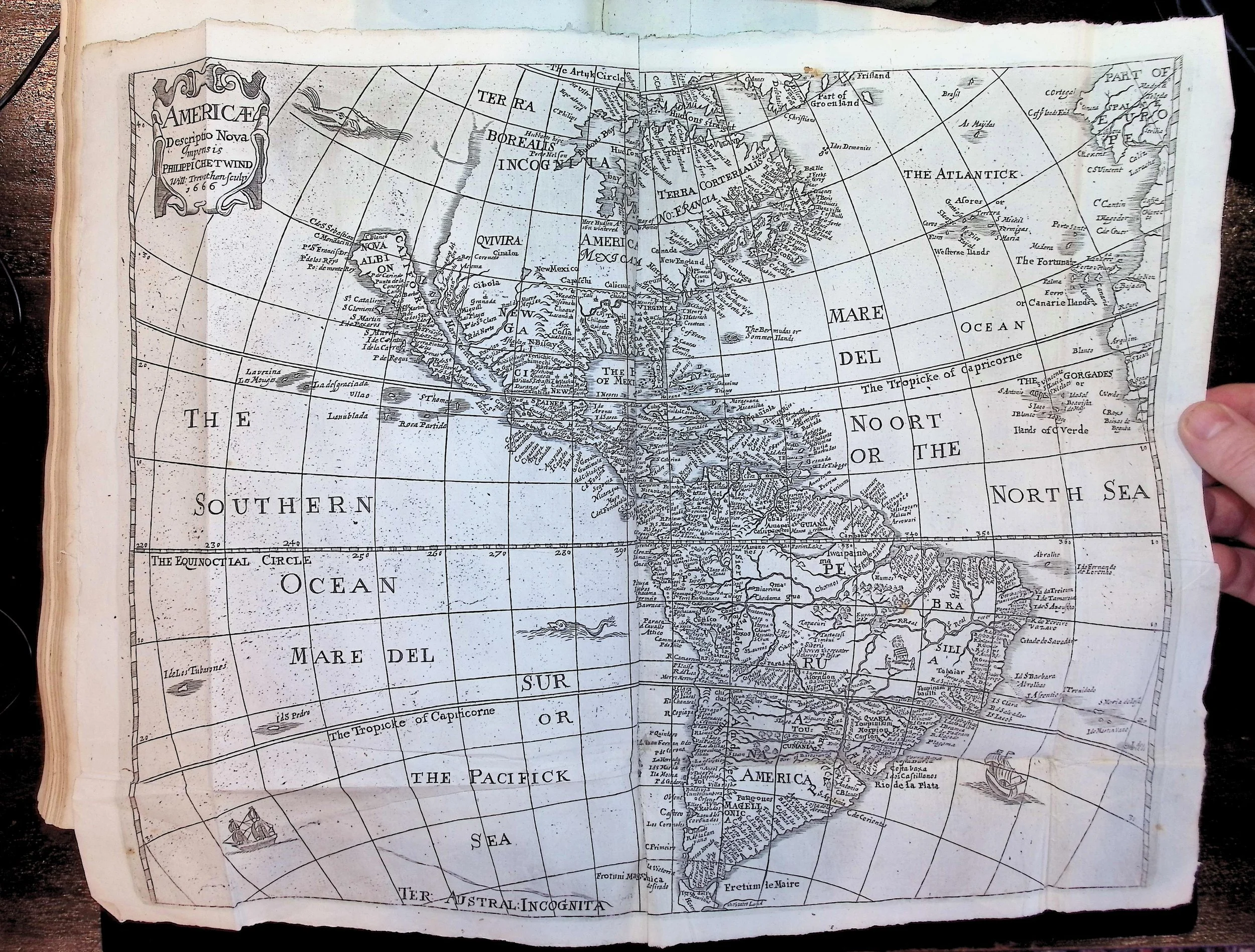
Peter Heylyn, Cosmographie (1670)
This map of the Americas features some striking visual elements in land and sea including an uneven density of place names around the continents as well as ships and serpents occupying the oceans.
Held in the Kinney Center’s rare book library.





